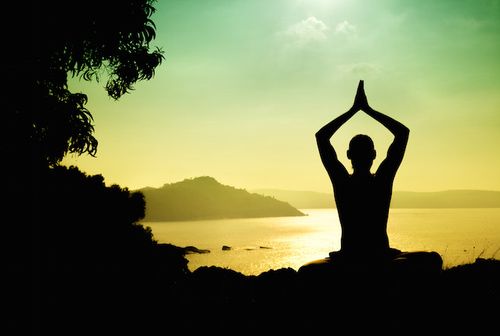Iyengar yoga: origins, practice, benefits
Iyengar yoga aims at correct anatomical alignment and helps joint stability and muscle strength. Let’s find out better.
> Meaning of Iyengar yoga
> Origins and philosophy of Iyengar yoga
> The practice
> The benefits of Iyengar yoga
> The teachers and the schools
> Curiosities about Iyengar yoga

Meaning of Iyengar yoga
Iyengar is the surname of the creator of the Iyengar yoga method . BKS Iyengar is the yogi – still alive – who, due to the fervor and the particularity of his teaching, has been attributed by his students the authorship of a style.
Origins and philosophy of Iyengar yoga
Iyengar yoga can easily be included in the ranks of yogas that have Hatha yoga as their progenitor . The peculiarity of Iyengar yoga lies in maximizing the precision of the positions and also in tending towards extreme positions . This yoga asserts that through deep listening to one’s body one can come to intuit its intelligence, what he defines as “its psychological expression”.
Through practice and the achievement of full listening to the body it is possible to grasp the difference in consistency between matter and thought , realizing that they are made of the same substance, only at different “densities”. This way you can train your body, mind and spirit to work together as a perfectly aligned machine. The misalignment of the body is in fact also of the mind, and aligning the first means aligning the second.
The spread of his work in the West is due to the publication of his book “Light on yoga” , from 1965. In less than half a century this style has become one of the most practiced in the world.
BKS Iyenhgar, the master of contemporary yoga

Practice
Initially, the practice of the Iyengar method proceeds through the in-depth study of asanas (postures) and pranayama (breath control).
Master Iyengar has in fact systematized more than 200 classical yoga positions and 14 types of pranayama techniques , carefully describing every detail for their execution. Subsequently, categories were structured to allow the graduality of learning, from the easiest positions to the more complex ones.
The peculiarity of the method is to use tools to facilitate the correct execution of the positions and allow everyone to practice them, despite the limitations imposed by different physical conformations, disorders or ages. In the Iyengar method belts, cushions, wooden blocks , chairs are used to allow anyone to reach the right anatomically correct position.
The time for which the position must be maintained has also been studied and decoded, to allow the effects of the positions to penetrate deeply into the practitioner. The duration of the positions is in fact – together with the right sequence and technical precision – what characterizes Iyengar yoga compared to the others.
Benefits of Iyengar yoga
The Iyengar method’s emphasis on correct anatomical alignment has refined the therapeutic aspects of yoga that have been known for millennia. With the practice of Iyengar yoga, benefits are obtained at the level of stability of the joints, harmony and strength of the muscles, alignment of the limbs and spine. Very suitable for sportsmen or runners as a complementary technique to improve their performance. Considerable benefits are also felt at the level of the internal organs, which benefit from the stimulus they receive from every position; improves the immune system and helps to relax and balance the mind .
The meticulous decoding of the asanas and the definition of each phase in the passage from the basic positions to the more complex ones, make this style practicable for all ages ; children, adults and even the elderly who want to keep their muscles active and mobilize their joints. There are also targeted programs designed to treat specific ailments such as chronic back pain, immunodeficiency, hypertension , insomnia , depression and menopause .
The teachers and the schools
Living BKS Iyengar. He starts practicing yoga at the age of 16 introduced by his brother-in-law, prof. Krishnamacharya, then director of the Mysore Royal Family Public Yoga School. At just 20 he was appointed by his teacher guru and since then his fame has only grown. Today, after over 60 years of teaching yoga around the world, Mr. Iyengar still performs his practices on a daily basis.
The international headquarters of his school ( Ramamani Iyengar Memorial Yoga School ) is located in Poona in India. The institute is dedicated to the memory of his wife and is known for studying the therapeutic powers of yoga, which is also used here to treat diseases and physical problems of all kinds.
Curiosities about Iyengar yoga
A study in America applied Iyengar yoga as a cure for HIV patients with very significant results.




























+ There are no comments
Add yours